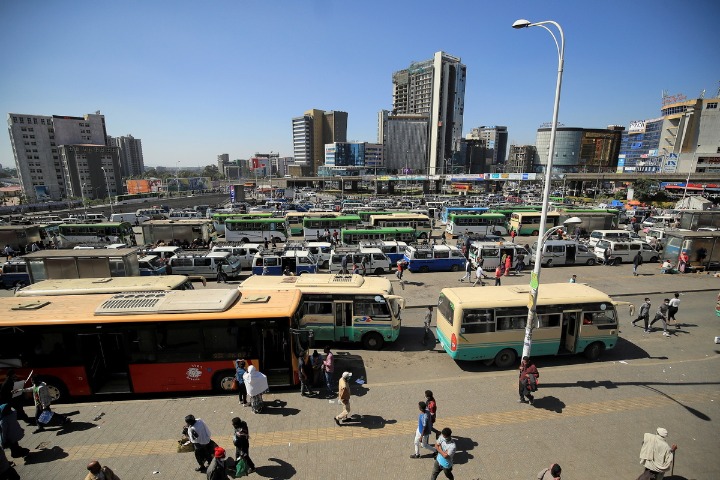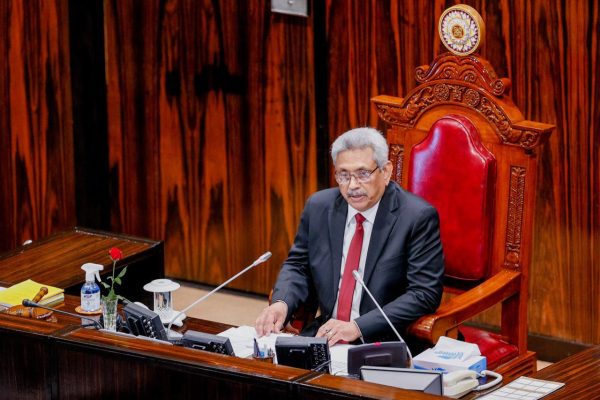Is Africa really in a debt crisis?

This is part 2 of a 5 part series
Paris, March 22. The debate, organized by the law firm Franklin, on the renegotiation of the sovereign debt of low-income countries, particularly those in Africa, is lively. The divergence of views between Michel Sapin and Lionel Zinsou is flagrant. The first, former French Minister of Economy and Finance, is worried about the resumption of debt service for these countries, unable to meet their debts. “We are at a crucial moment; decisions must be made to avoid irreparable damage,” he says.
The latter, Prime Minister of Benin from 2015 to 2016 and today managing partner of the investment bank SouthBridge, is less alarmist and keeps repeating that Africans have made progress in the management of their public debt on the basis of their past experiences. “There are now many other opportunities for resource mobilization. They are presented as an aggravation of the situation […]. However, the market is doing its job and there is reason to rejoice in this new dynamic,” he says.
Concerns have been growing since the end of the Debt Service Suspension Initiative (DSSI) in December 2021. This system, set up in May 2020 as an emergency measure to deal with the Covid-19 crisis, has not known the expected success. It certainly won over many countries (around thirty), but the amounts at stake did not match the expected volumes ($5 billion for bilateral creditors). The same goes for the “Common Framework” instituted by the G20 in the wake of the DSSI, which aimed to help over-indebted countries to restructure their liabilities, but was only requested by three countries (Chad, Zambia and Ethiopia). . Is this the sign of a new maturity of African countries in the management of their sovereign debts? Is the issue of debt still relevant in Africa?
Growing importance of private creditors
It is true that the indebtedness of low-income countries has increased considerably over the past 20 years, according to Catherine Bouvier d’Yvoire, managing director of public sector and development organizations at Standard Chartered Bank. A note published last December by the IMF estimates that 60% of these countries are today at high risk of over-indebtedness, if they are not already over-indebted, whereas only 30% of them were in this situation in 2015. Likewise, the nature of lenders has changed.
“Much more numerous than in 2015, private creditors are now as important as their multilateral and bilateral counterparts; and China, which has become a major creditor to Africa among public lenders, does not have the same transparency practices,” says Sapin, now a senior adviser at Franklin. This implicitly means that the risk of being faced with hidden debt situations – which was the case in Mozambique – is even higher.
Nevertheless, “remarkable changes have taken place in the debt situation of developing countries,” says Bouvier d’Yvoire. “For ten years, specifies the banker, the nature of the instruments used has changed, the currencies have diversified”. Traditionally, sovereign bond issues in emerging countries were denominated in dollars; today, these same issuers borrow in euros. The terms have also improved for certain sovereign States over the course of their issues, whether on the margins (spreads) or on the maturities. Currency hedging instruments have also been developed.
Our continent is no sicker than the OECD countries
There is also the example of Senegal, which borrowed at seven years in 2009 and now issues at 30 years; or Burkina Faso, which continued to issue on the regional market despite the change of administration following the January coup. At the start of the Ukrainian crisis in late February, Nigeria reopened the Eurobond market to raise $1.25bn. Angola followed with a $1.75 billion Eurobond, slightly less oversubscribed than its predecessor. As for Côte d’Ivoire, it finally gave up on a new eurobond, preferring to address the regional market, as reported in April Business Africa+.
Marked increase in GDP for sub-Saharan countries
Another notable development is that countries are borrowing to finance their development needs and to refinance existing debt. This mechanism lengthens the average maturity of the debt. “If a State can borrow at 30 years on the international capital markets – as certain countries in sub-Saharan Africa have done – it then gently reprofiles its debt: it repays a debt issued at 10, 12, 15 years with a maturity 30 year debt. As a result, we are seeing an improvement in terms for the sovereign issuer,” says Bouvier d’Yvoire. Three categories of countries are emerging on the continent: those in distress, those that have access to capital markets and those that aspire to go there. The picture is much more nuanced and less risky than it often seems.
The increase in the stock of debt is a positive sign, not just a pathology
In addition, during the 15 years preceding the Covid-19 crisis, the GDP of sub-Saharan African countries increased by an average of 7 to 8%. In some countries, a new calculation of GDP (rebasing) has allowed spectacular increases, such as in Nigeria (+90% in 2014), Ghana (+60% in 2010), Benin (+36.4% in 2020) and in Togo (+37% in 2020). When the GDP increases, it is normal that the debt follows, explain the experts.
According to Lionel Zinsou, “the increase in the stock of debt is also a positive sign, and not just a pathology”. With a turnaround in international financial markets over the past two weeks marked by rising interest rates signaling the beginning of the end of quasi-free money, Zinsou says: “In 2021, the abundance of liquidity at the international level has attracted many countries, both in Africa and in the OECD, to the international bond markets. Indeed, if there is a “pandemic” of rising debt, it’s not just in sub-Saharan Africa. Our continent is no more sick than the OECD countries.
“The African Union always calls for debt reduction, but in reality, it happens on its own, it works. Sometimes, when crises arise, there is an ad hoc treatment, but the truth is that there is an ongoing treatment of the debt of the least developed countries. We need to stop making a big deal out of African debt,” he said.
Ultimate vestige of a bygone or advanced historical era?
Is the G20 Common Framework – supposed to bring together all creditors to address developing country debt – the last vestige of a bygone era? This is not so sure. Admittedly, its implementation is complex, but for over-indebted countries, it remains the process best suited to the relief needs that cannot be met by a single category of creditors. This is the case of Chad, Ethiopia and Zambia – the latter having been the first country on the continent to default during the Covid-19 pandemic.
The principle of balanced treatment frightens private creditors
According to the Paris Club, which took part in discussions on Chad, the G20 Common Framework has already produced results: it is the first time that China, India, France, Saudi Arabia and the Club of Paris are seated around the same table. The significance of the common framework is all the more historic while Beijing, contrary to its usual practice, is in the front line as co-chairman of the committee set up for the talks with Chad and Zambia.
In Zambia, where the external debt is estimated at some 17.3 billion dollars (more than a third of which is held by China), the authorities hope that the restructuring file will be completed by the end of June. However, two major difficulties remain for the common framework. The first is its slowness. Initiated in 2020 in the case of Chad, it has still not been completed nearly a year and a half later. Meanwhile, the external environment has changed with the rise in oil prices, which has provided the country with new financial margin. The other major obstacle is the involvement of private creditors in rescheduling discussions. In Chad, the committee strongly encouraged private creditors, led by the Swiss trader Glencore, to approach local authorities, with the aim of obtaining balanced treatment from all lenders on the country’s debt.
Fiscal orthodoxy and the virtuous circle
As Bouvier d’Yvoire says, “the principle of comparability of treatment [balanced treatment] spooks private creditors, like commercial banks, who fear being caught up in debt restructurings with – potentially – a reduction in principal or interest rates. This could lead them to stop lending because their vocation is to lend under conditions of calculated risk”. This is why some countries, such as Kenya, have chosen not to participate in the DSSI in order to keep their access to this type of funding intact.
Other emerging countries in sub-Saharan Africa that participated in the DSSI, such as Côte d’Ivoire and Senegal, were careful to make it clear to private lenders and rating agencies that the initiative would not be extended to creditors. private. “When Moody’s and the other rating agencies realized that these countries only wanted to talk to bilateral creditors, they backed off and removed their ‘surveillance’,” explains Bouvier d’Yvoire.
We did an amazing job [in Benin] create a signature in international markets
This special treatment from private lenders is not without criticism, as it effectively translates into a sort of “subsidy” of their debt by other lenders. Perhaps it was also imposed because the repeated issuance of Eurobonds is finally forcing African economies to be more fiscally compliant? In order to maintain their access to international bond markets, governments on the continent have been encouraged to adopt good management, thus creating a virtuous circle.
As Lionel Zinsou recalls, in June 2015, when he became Prime Minister of Benin, most of the country’s debt was due within a year. “It was extremely dangerous! And then, in a few years, we went from one year to 30 years. We have done an incredible job of creating a signature in international markets,” he says. It must be said that “now, thanks to the quality of their credit and their macroeconomic performance, these countries are entering the international capital markets, where the sums offered to them offer them new prospects”, specifies Bouvier d’Yvoire. “Therefore, it is no longer a question of cutting oneself off from these markets.





![[Press release] Debt crisis: a failed G20 summit](https://www.cadtm.org/local/cache-vignettes/L710xH373/f0bd231bf33e0619051e008da75a42-274d7.jpg)
